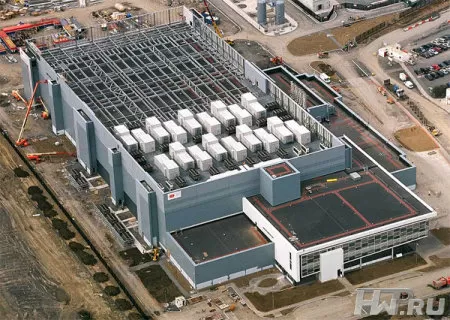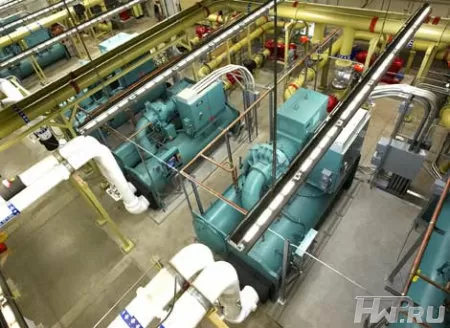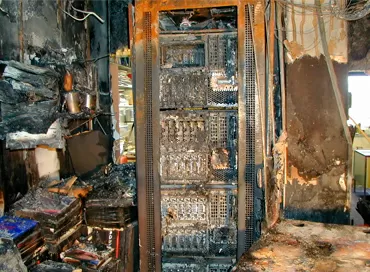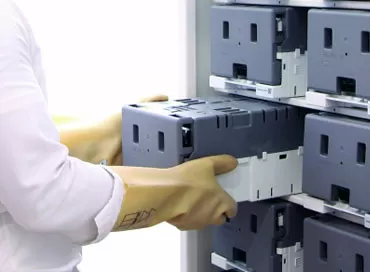Energy Star for data centers, light and dark sides
You have probably seen Energy Star stickers on computers, refrigerators, televisions and other consumer electronics. This label indicates that the product has been certified according to the international Energy Star standard adopted in the United States back in 1992. This standard was created for energy-efficient devices and if its sticker is present, say, on your monitor, this means that the monitor consumes 20-30% less electricity than analogs with the same functionality.
In the not too distant future, Energy Star decals will also be found on the walls of some data centers, and the organizations that own those data centers will proudly display the decals. But the question is how accurate and fair is the & ldquo; Energy Star & rdquo; certification will reflect reality.
After many months of collecting, processing and analyzing data center statistics and collaborating with various players in this industry, the EPA has announced the release date for the complete Energy Star standard for data centers & ndash; June 7.
The new rating system is quite tightly tied to the value of PUE (power usage effectiveness), which is the sum of the energy consumption indicators of the components of the data center, for example, the energy consumption of servers, power delivery systems (including UPS), cooling systems, and so on. PUE is the ratio of a building's electricity consumption to IT equipment consumption. Ideally, this ratio should be less than 2: 1, and the closer it is to one, the more efficient in terms of energy consumption the data center. According to the EPA, a PUE of 1.25 is good, while 3.0 is not.
But the new Energy Star rating takes into account more than just PUE. It has a range of 1 to 100 points and is based on comparing the actual PUE of the datacenter with the estimated PUE. The estimated PUE is calculated based on the annual energy consumption of IT equipment, and is essentially the average PUE for datacenters of the same size and performance with the same annual energy consumption.
Reaching the estimated PUE gives you +50 rating, which means that your data center has average efficiency for its size, power consumption and equipment utilization. If a property is rated 75 or higher, it is ranked in the 25% of energy efficient data centers eligible for the Energy Star label.
The model, as you might expect, is aimed at rewarding companies that care about the performance of their datacenters. In a Green Grid presentation earlier this year, the EPA provided an example of how the Energy Star rating was calculated. In the scenario, two identical datacenters of the same size, with the same UPS power consumption, and in the same climate, had an estimated PUE of 1.87.

In this scenario, the economizer used by one of the data centers for the cooling system became the differentiator, which saved 20,000 MBytes of consumption over the year. As a result, the PUE of the saved datacenter dropped from 1.73 to 1.64, and the Energy Star rating increased by 10 points from 60 to 70.
When considering the rating of this datacenter, two questions come to mind: Is it effective? And is it fair?
Of course, the system is effective because it should motivate owners to measure the energy efficiency of their data center, which is the first important step in reducing the energy consumption of the facility and, accordingly, reducing environmental pollution. In addition, companies boasting exceptionally low PUEs and high efficiency can prove it with certification.
However, this rating has its drawbacks. One of the main ones can be considered a strong attachment to the PUE indicator, which has been criticized more than once. PUE is quite justifiably called a not-so-effective tool for measuring the overall efficiency of data centers. One of the most common reasons for the impracticality of PUE is this example: a data center is equipped with hundreds of servers, for example, the IBM System x3500 or IBM x3550, which are used at 80%, 24 hours a day/7 days a week. Its actual PUE is 1.25. Now let's compare this data center with an absolutely identical data center, in which the same hundred system x3650 or IBM System x3550 servers are running, but their workload is zero, that is, they are in standby mode 24 hours a day/7 days a week, while they still consume the same amount of electricity. The actual PUE of the second object, where the IBM x3650 or system x3550 servers are not busy, is also 1.25, despite its low gross performance. In other words, data centers labeled with Energy Star may still be ineffective.
John Haas, vice chair of the technical committee at The Green Grid, said the group supports the EPA's work and decision to base its rankings on PUE. However, Haas, who is also director of the Intel Eco-Technologies Programs Office, said the ranking is just the first step in developing meaningful energy efficiency standards for data centers.
In terms of the fairness of the rating, there are many potential disadvantages. Among these shortcomings is the rating's focus on all data centers indiscriminately. The rating does not take into account the various categories of data centers. Consider two supposedly identical datacenters: the same size, the same location (and climate, respectively), the same number and type of IT equipment, but one datacenter falls under the Tier I category, and the second under the Tier III or IV. Data centers with higher Tier levels require more redundancy (in the form of installing more backup power equipment) in order to guarantee more uptime.

This, in turn, means a higher PUE than a Tier I data center, out of necessity, not due to inefficiency. Also, the Energy Star rating puts the Tier I datacenter at a disadvantage by applying the same implied PUE to both datacenters. You might just as well compare a workstation to a laptop where the workstation will not be Energy Star certified because it will not be as efficient as a laptop, even if that workstation is much more efficient than other workstations.
EPA says they considered Tier when developing the model and found it "did not show strong, statistically significant correlations with energy use."
Additionally, industry-wide respondents have requested that tier be ignored for a number of reasons. Among them, some datacenters have multiple Tier tiers, and “Tier ordering can be a deterrent to effective design.
On the other hand, Haas said he expects some sort of classification in the future that will allow different datacenters to be categorized. The EPA already uses categorization when measuring the energy performance of buildings, with buildings categorized by size and function, for example, buildings can be categorized as hotel, office, and so on. “We expect the same classification system to be adopted for datacenters,” John noted.
The rating does not take into account other important variables such as climate. The efficiency (according to Energy Star) of a data center located in the northern part of the world will be higher than the efficiency of a data center built in a country with a hot climate - it will require more energy to cool it.
Despite this, the EPA, as in the case of the Tier, decided not to take climate into account in the formula. The explanation for this approach is rather strange: “the analysis showed no statistically significant changes in energy consumption due to climate change.”
The Energy Star rating system for data centers is like the Energy Star rating system for servers - the first step is good, but there is still a lot of work to be done. And the EPA is aware of this fact. In the same way that EPA periodically updates the Energy Star rating for computers and appliances to reflect market developments and advances in technology, it will update its datacenter ratings.
In the meantime, Energy Star will set the bar for data center efficiency that will motivate organizations to measure energy use and (hopefully) improve the efficiency of their data center.
Andrey Baks
30/03.2010












